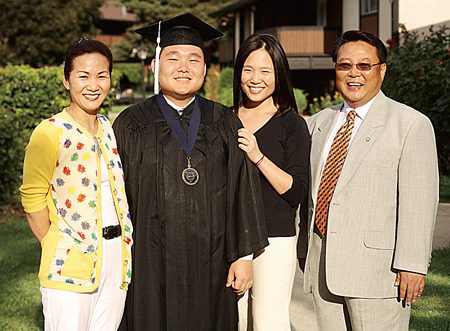For centuries luthiers, or makers of stringed instruments, have studied instruments made by Antonio Stradivari, hoping to discover the Italian master’s secrets. With their incomparable sound quality, Stradivari’s violins, violas, and cellos regularly garner millions of dollars at auction for the sale of a single instrument. According to Noel L. Owen, professor of chemistry and biochemistry, and H. Dennis Tolley (BS ’70), professor of statistics, the explanation may have as much to do with chemistry as woodworking.
Along with Joseph Nagyvary of Texas A&M University, lead author of the study, and Joseph DiVerdi of Colorado State University, Owen and Tolley recently coauthored a study, published in the journal Nature, about Stradivari’s secret.

Noel Owen (left) and Dennis Tolley demystify the alchemy of violin making in their recent Nature study.
In the study Owen used infrared spectroscopy to analyze the “spectral fingerprints” of small shavings of maple wood from Stradivari’s instruments. Owen compared those shavings to shavings taken from the instruments of Guarneri, a contemporary of Stradivari who lived in the same Italian city of Cremona, and other luthiers from London and Paris.
“When we looked at all these maples, we realized that the Stradivarius and Guarnerius maple wood had a different intensity pattern from all the others,” says Owen. “We realized then there must be a difference in the chemical composition of the wood.”
Tolley determined that the chemical differences observed in the wood spectra were statistically significant, and after extensive research, Nagyvary discovered that Stradivari and Gaurneri both bought a wood treatment from the same local apothecary. According to the study, it is this wood treatment that gives the instruments their transcendent sound. “The irony is that neither Guarneri nor Stradivari knew what effect this chemical treatment was going to have on their instruments,” says Owen. “The tone and quality of their instruments probably has as much to do with the chemist that made the chemical cocktail as it does with the workmanship of the violin makers.”
As violin music aficionados, both Owen and Tolley were excited by the results of their research. “It was thrilling to contribute to solving a mystery that has puzzled so many people over the years,” says Owen.









